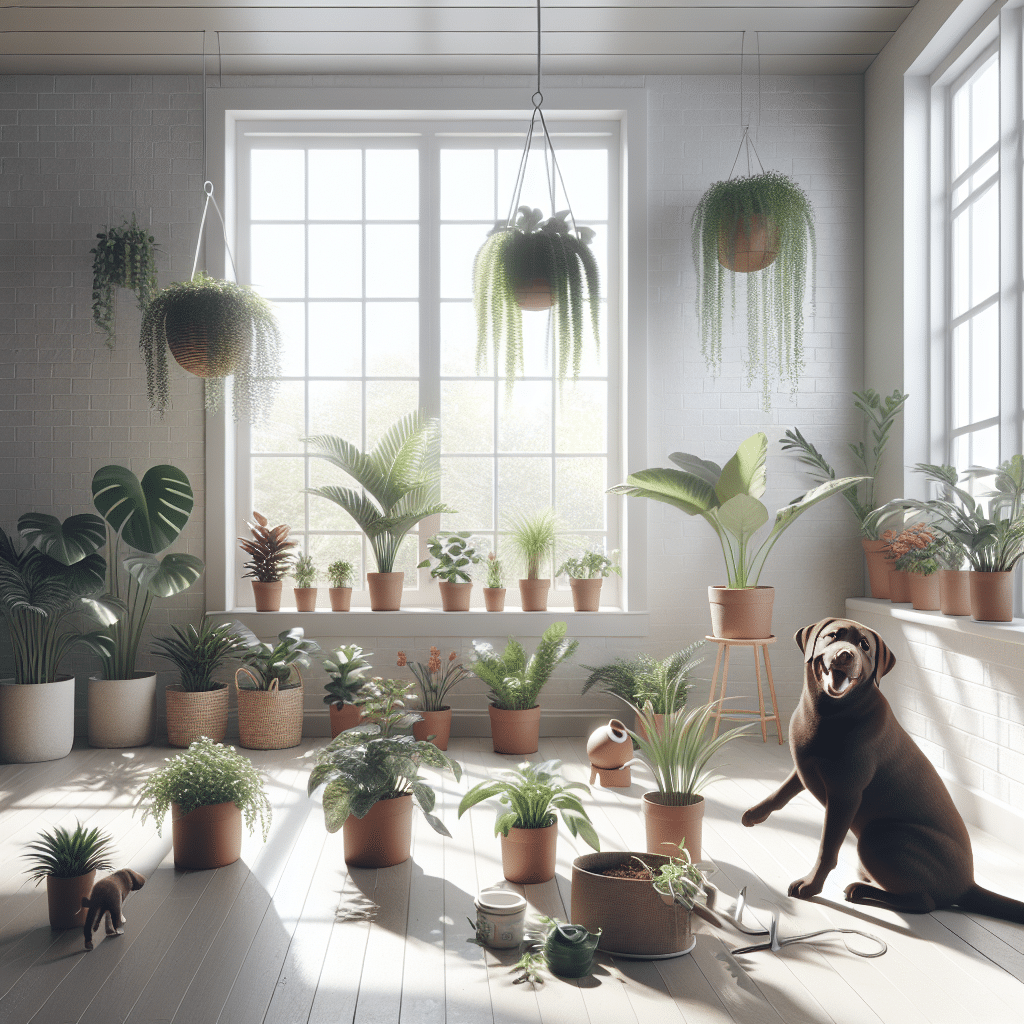Dog-Friendly Indoor Gardening: Creating a Safe Green Space for You and Your Pet
Indoor gardening is a wonderful way to beautify your home, purify the air, and bring the joy of nature within your living space. However, many popular houseplants can be toxic to dogs, leading to concern for pet owners. This guide explores safe, dog-friendly plants and effective gardening techniques for creating a vibrant indoor oasis that keeps both your flora and furry friends happy and healthy.
Choosing Dog-Friendly Houseplants
When selecting plants for your indoor garden, it’s crucial to prioritize species that are non-toxic to dogs. Here’s a list of popular dog-friendly plants that thrive indoors:
-
Spider Plant (Chlorophytum comosum)
Known for its ease of care, the spider plant features long, arching leaves and produces “pups” that can be propagated. It’s non-toxic and safe for dogs. -
Boston Fern (Nephrolepis exaltata)
This lush fern adds a tropical feel to your space. It’s not only dog-friendly but also enhances indoor air quality by removing pollutants. -
Bamboo Palm (Chamaedorea seifrizii)
A striking addition to any room, the bamboo palm prefers indirect light and works to filter the air in your home, all while being safe for dogs. -
Areca Palm (Dypsis lutescens)
This palm is pet-friendly and helps humidify the air, making it a perfect choice for homes with dry environments. -
African Violet (Saintpaulia)
These charming flowering plants come in various colors and are non-toxic to dogs, adding vibrant splashes of color to your indoor garden. -
Calathea (Calathea spp.)
Known for their stunning leaf patterns, calatheas thrive in low-light conditions and do not pose any risk to your pet’s health. -
Money Tree (Pachira aquatica)
This symbol of good luck, the Money Tree, is non-toxic to dogs and can grow beautifully in various indoor settings, requiring minimal care. -
Prayer Plant (Maranta leuconeura)
With its unique leaf mottling and habit of folding its leaves at night, this decorative plant is safe for pets.
Designing Your Indoor Garden Space
Creating a dog-friendly indoor garden not only involves selecting the right plants but also designing the space to be engaging for both you and your pet. Here are tips to effectively design your dog-friendly garden:
-
Elevated Plant Stands
Since dogs are naturally curious, consider using elevated plant stands or hanging planters to keep plants out of their reach. This will prevent them from digging or chewing on the plants. -
Non-Toxic Soil Choices
Regular potting soil is typically safe, but opt for organic or pet-safe soil mixtures whenever possible. Avoid soil additives that may pose risks to dogs, such as certain fertilizers. -
Water Management
Ensure that your watering method doesn’t create puddles that dogs might drink. Use self-watering pots to minimize spills or consider a watering globe to regulate hydration. -
Barrier Solutions
Use decorative fencing or baby gates to create a pet-free zone around your indoor gardening area. This helps protect both your plants and your dog from potential mishaps. -
Pet-Friendly Decor
Incorporate sturdy and non-toxic decorations and accessories that are safe for dogs. Avoid items with small, detachable pieces that can be easily swallowed.
Maintenance Tips for Dog-Friendly Indoor Plants
Maintaining a dog-friendly indoor garden requires diligence and attention. Here are essential care tips to ensure a thriving environment:
-
Regular Pruning
Keep plants trimmed and tidy to prevent bees and wasps that could attract your dog. Regular pruning also promotes healthy growth and enhances aesthetics. -
Safe Pest Control
Use organic pest control solutions, like neem oil, that are safe for pets. Regularly inspect plants for signs of pests and treat them promptly to avoid infestations. -
Proper Lighting
Ensure your plants receive the right amount of light. Consider placing energy-efficient grow lights near shady areas if natural sunlight is insufficient, promoting healthy plant growth. -
Temperature and Humidity
Maintain suitable indoor temperatures (between 65°F to 75°F) and humidity levels. Many indoor plants thrive in humid environments, so consider using a humidifier when necessary. -
Assessment for Allergies
Monitor your dog for potential allergic reactions when introducing new plants. Look for signs of itching, digestive upset, or abnormal behavior.
Engaging Your Pet in Indoor Gardening
Integrating your dog into your indoor gardening activities can be a fun bonding experience. Here are ways to include your furry friend safely:
-
Creation of a “Dog Zone”
Designate an area in your indoor garden where your dog can relax while you tend to your plants. This creates a cozy spot for your pet that encourages companionship. -
Interactive Planting Activities
Engage your dog with safe, interesting textures while planting. Use long-lasting chew toys that resemble gardening tools or plant shapes. -
Scent Trails
Incorporate dog-safe herbs like basil and parsley in your indoor garden for sensory exploration. Dogs love their scents and using them can provide mental stimulation. -
Training Opportunities
Use gardening time as a chance for training. Teach your dog to stay away from plants or designate areas, rewarding them with treats for good behavior.
Final Notes
Creating a dog-friendly indoor garden is an engaging project that can enhance your home life. Choosing safe plants, designing a careful and interactive space, and maintaining proper care not only fosters an incredible green oasis but also safeguards the well-being of your furry companion. Engaging in indoor gardening becomes a delightful experience for both you and your dog, promoting a shared connection with nature while ensuring a safe and pet-friendly environment.
By considering the safety and enrichment of your indoor gardening space, you can cultivate a vibrant and harmonious atmosphere that thrives alongside your beloved pet.
